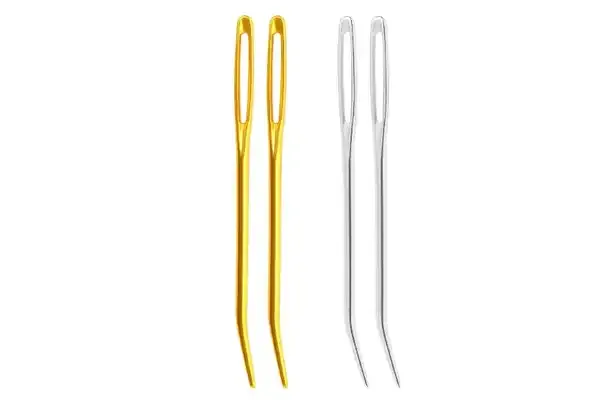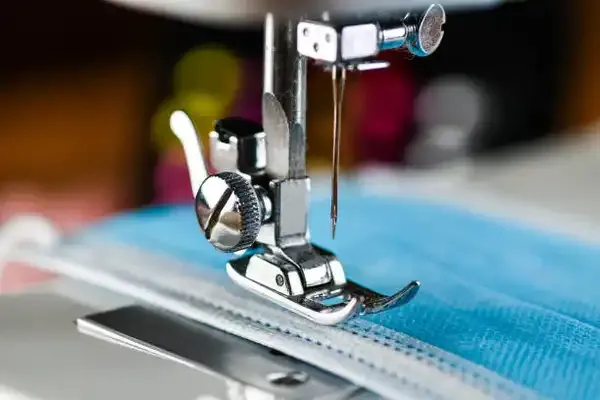Introduction
In the intricate world of garment production, the humble needle plays a crucial role in bringing fabric to life. From stitching together seams to creating intricate embroidery, the type of needle used can significantly impact the quality and efficiency of the sewing process. This article delves into the various types of needles commonly used in the garment industry, explores specialty needles tailored for specific fabrics, discusses the importance of needle maintenance and selection criteria, and highlights safety practices and innovations in needle technology. Understanding the nuances of needles is essential for achieving optimal results in garment construction and design.
Needles in Garment Manufacturing
Needles in the garment industry are like the unsung heroes of the sewing world. These tiny tools play a crucial role in turning fabrics into fabulous creations that we wear every day. From stitching seams to creating intricate designs, needles are the silent stars that make it all happen.
Maintaining and handling your needles with care is essential for optimal sewing performance and safety in garment manufacturing. Embrace innovations in needle technology to elevate your sewing experience and achieve superior results. Remember, a well-maintained needle is the unsung hero behind every stitch, so invest time in needle care for a smoother sewing journey.
Common Types of Sewing Needles
i. Universal Needles
Universal needles are like the Swiss Army knives of the sewing world. They work well with a variety of fabrics, making them a go-to choice for general stitching tasks.
ii. Ballpoint Needles
Ballpoint needles are the friendly giants of the needle family. They gently push through knits and stretch fabrics without snagging or damaging them, ensuring smooth sewing experiences.
iii. Sharp Needles
Sharp needles are the daredevils of the needle world, piercing through tightly woven fabrics with ease. They are perfect for precision stitching and creating crisp, clean lines.
iv. Stretch Needles
Stretch needles are the flexible acrobats in the needle circus. Designed specifically for stretch fabrics like spandex and lycra, they can bend and move with the fabric to prevent skipped stitches and fabric damage.
Specialty Needles for Specific Fabrics
i. Denim Needles
Denim needles are the tough guys of the needle gang, ready to take on thick layers of denim and other heavy fabrics. With their extra strong shafts, they power through sturdy materials like a needle through, well, denim.
ii. Leather Needles
Leather needles are the rockstars of the needle world, capable of piercing through leather and suede-like a hot knife through butter. With their razor-sharp tips and strong shafts, they can handle the toughest leather projects with ease.
iii. Embroidery Needles
Embroidery needles are the artists of the needle realm, bringing designs to life with every stitch. With their large eyes and sharp points, they can effortlessly glide through embroidery threads and fabrics, creating intricate patterns and details.
iv. Quilting Needles
Quilting needles are the cozy companions of the needle universe, perfect for quilting enthusiasts. With their tapered points and strong shafts, they smoothly sew through multiple layers of fabric, batting, and backing, making quilting a breeze.
Needle Sizes and Selection Criteria
i. Understanding Needle Size Designations
Needle sizes can be as confusing as trying to match socks from the laundry. Understanding needle size designations, which range from delicate 60/8 to robust 120/19, is key to selecting the right needle for your sewing project.
ii. Factors to Consider When Selecting Needle Size
When choosing a needle size, consider factors like fabric weight, thread thickness, and stitching technique. A larger needle size is suitable for heavy fabrics and threads, while a smaller size works best for delicate fabrics and threads. Remember, the right needle size can make all the difference between a sewing success and a tangled mess.# 5. Importance of Needle Maintenance and Replacement
iii. Regular Needle Maintenance Practices
Maintaining your needles in tip-top shape is crucial for quality stitching and avoiding costly repairs. Keep your needles clean by regularly wiping them with a lint-free cloth and occasionally applying a drop of sewing machine oil to lubricate them. Check for any burrs or defects on the needle, and make sure to change them if you notice any issues.
iv. Signs of Needle Wear and When to Replace
Don't wait for your needle to break mid-stitch to replace it! Keep an eye out for signs of wear such as skipped stitches, snags in the fabric, or a popping sound during sewing. Replace your needle after every 8-10 hours of sewing to ensure smooth operation and prevent damage to your garment.
Needle Handling and Safety Practices in Garment Manufacturing
i. Proper Needle Handling Techniques
Handle your needles with care to avoid accidents and ensure longevity. Always hold the needle by the shank when inserting or removing it from the machine. Use a needle inserter to prevent accidental pricks and make the process easier. When changing needles, make sure the machine is turned off to avoid injury.
ii. Safety Precautions for Needle Use
Safety first, folks! Always wear protective gear like safety glasses to shield your eyes from flying needles. Keep your fingers away from the needle area while sewing to prevent accidents. Make sure your machine is properly threaded and tensioned to avoid needle breakage and potential injuries.
Innovations in Needle Technology for Enhanced Performance
i. Nano-coated Needles
Say goodbye to skipped stitches and thread breakage with nano-coated needles! These innovative needles have a coating that reduces friction and heat buildup, leading to smoother sewing and increased durability. Upgrade your stitching game with this game-changer in needle technology.
ii. Specialized Needle Designs for Efficiency
Gone are the days of one-size-fits-all needles! Specialized needle designs catered to different fabrics and stitching techniques are revolutionizing the garment industry. From ballpoint needles for knits to sharp needles for woven fabrics, choose the right needle for the job to achieve professional results with ease.
Conclusion
As we conclude our exploration of the types of needles used in the garment industry, it becomes evident that these small yet essential tools play a significant role in the creation of quality garments. By understanding the different types of needles available, practicing proper maintenance, and embracing innovations in needle technology, garment manufacturers and sewing enthusiasts can enhance their sewing experience and achieve superior results. Remember, the right needle can make all the difference in the world of garment construction.











0 Comments